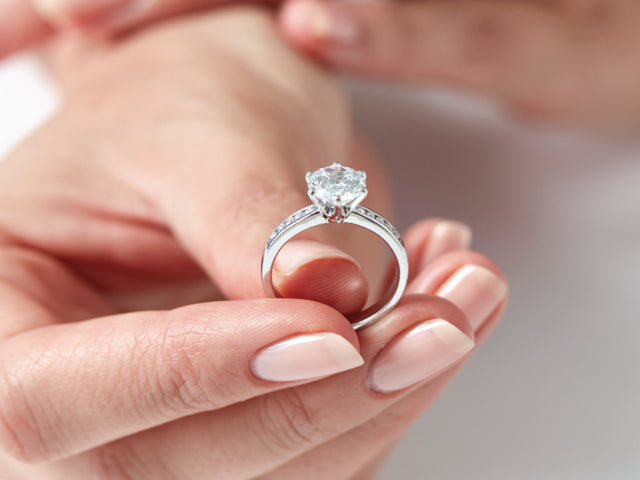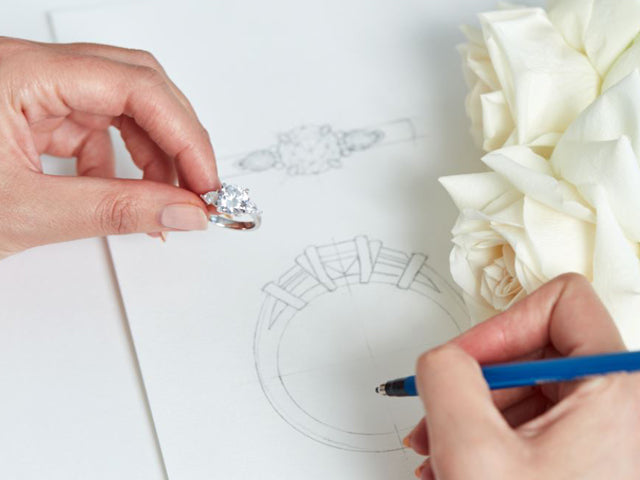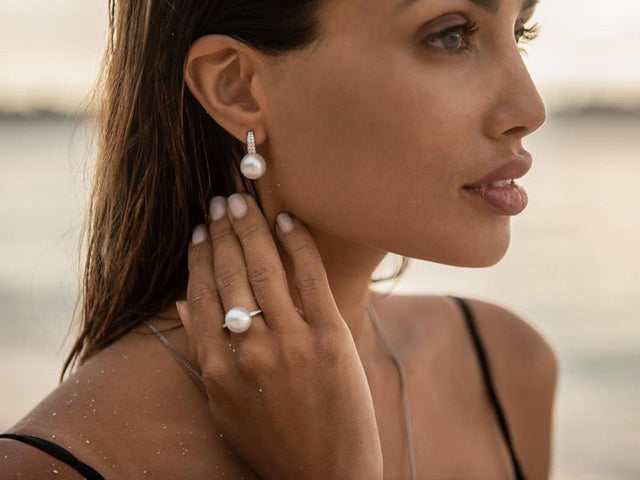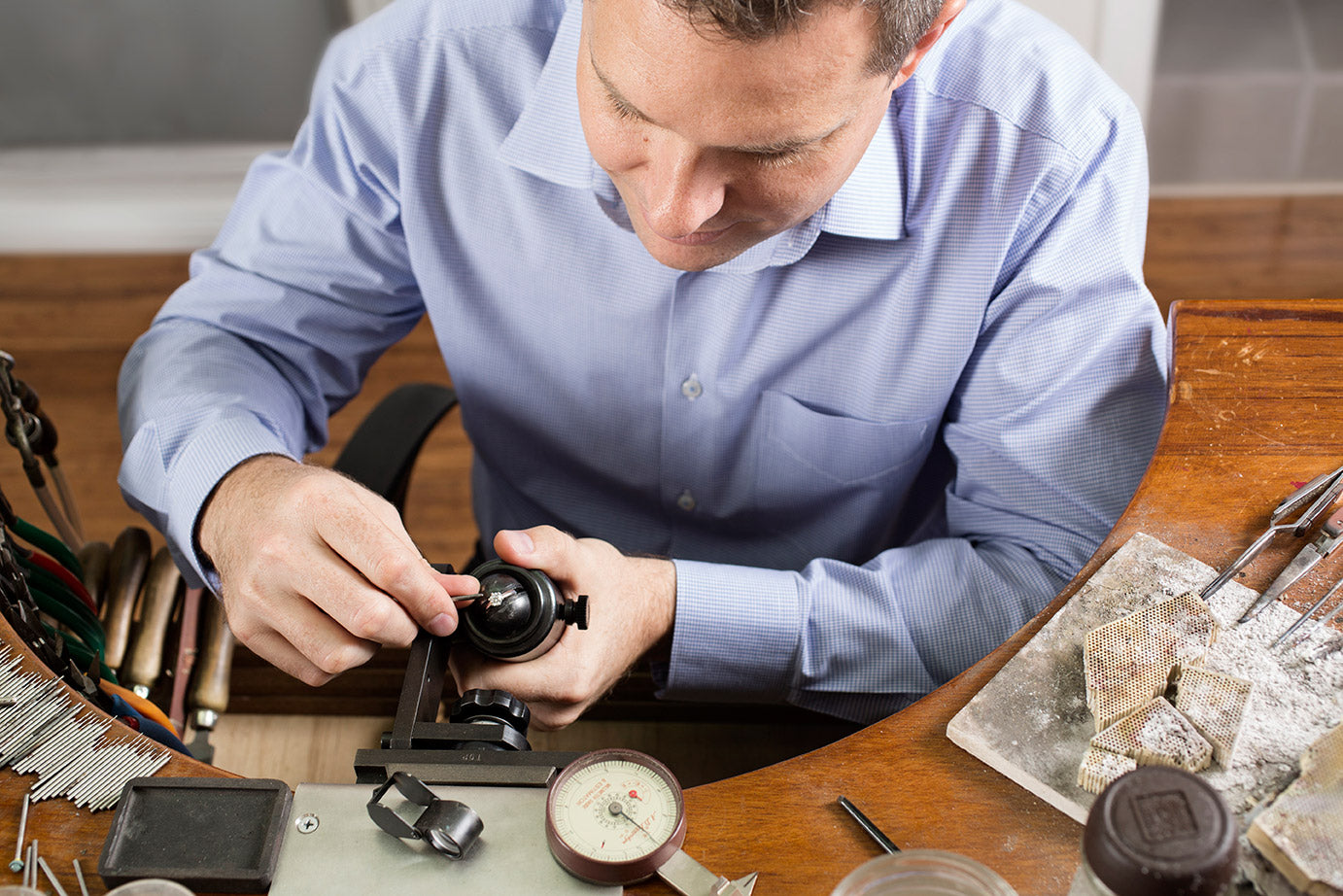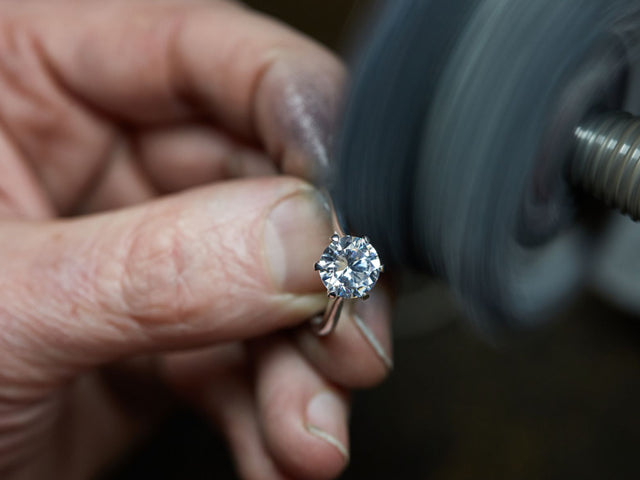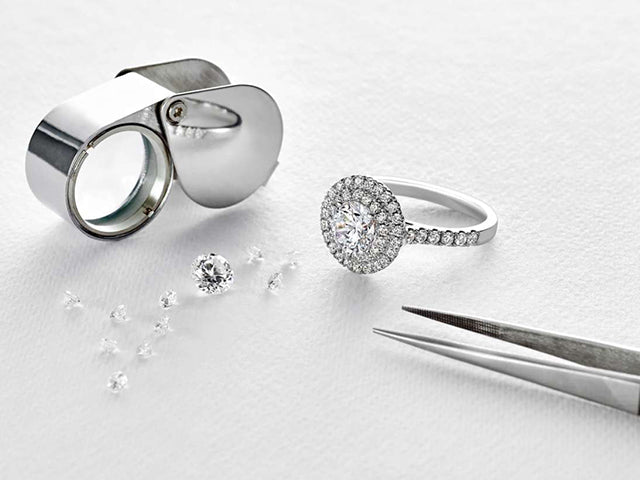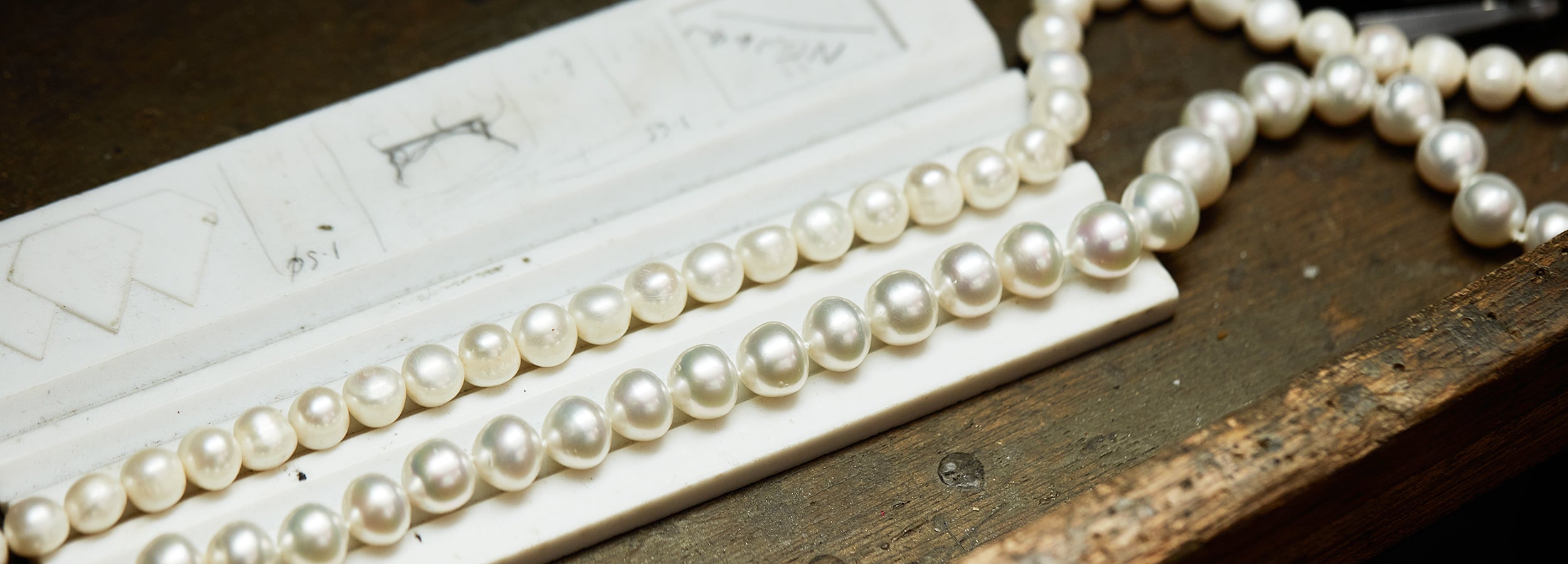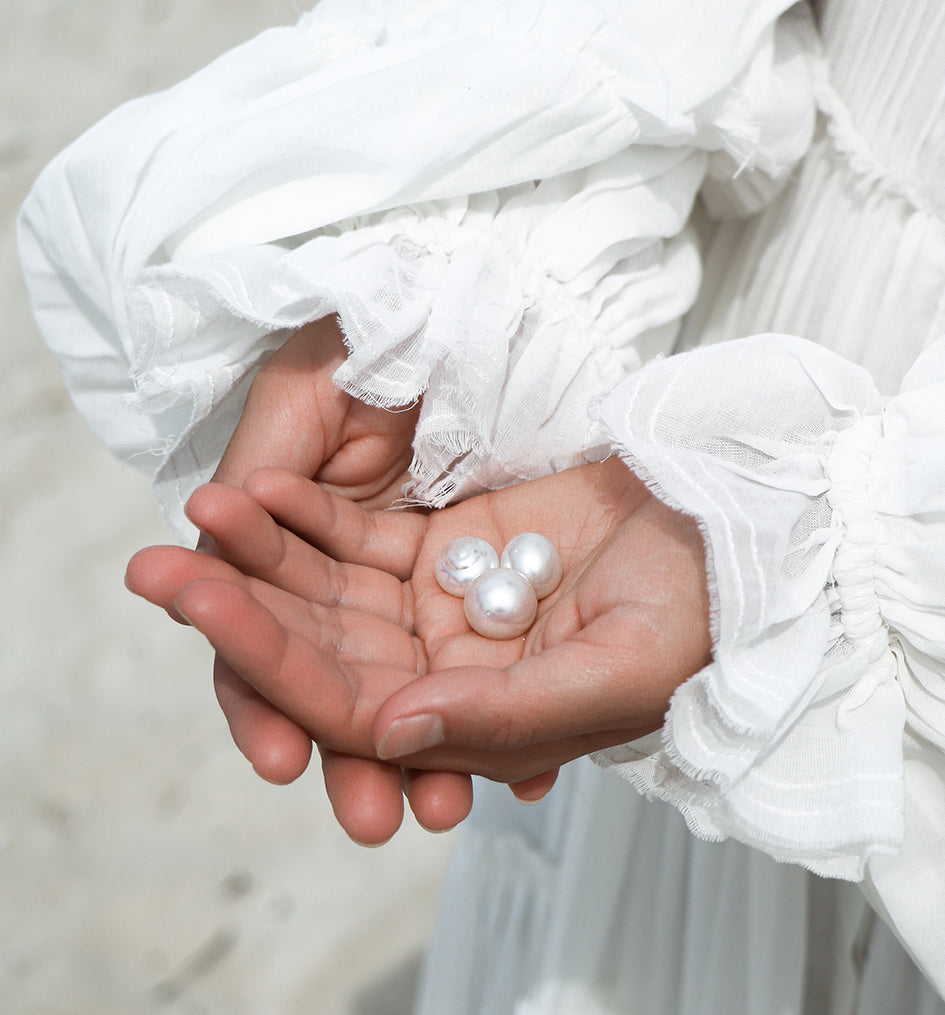
South Sea White Pearls
South Sea White Pearls are very large round pearls. Australian South Sea pearls are famous the world over because of their exceptional lustre and creamy colours. The colour of the pearl depends on the colour of the mother of pearl lining inside the shell of the Pinctada maxima oyster.

South Sea Black Pearls
South Sea Black Pearls are very large naturally black pearls. They are also referred to as Tahitian Pearls.
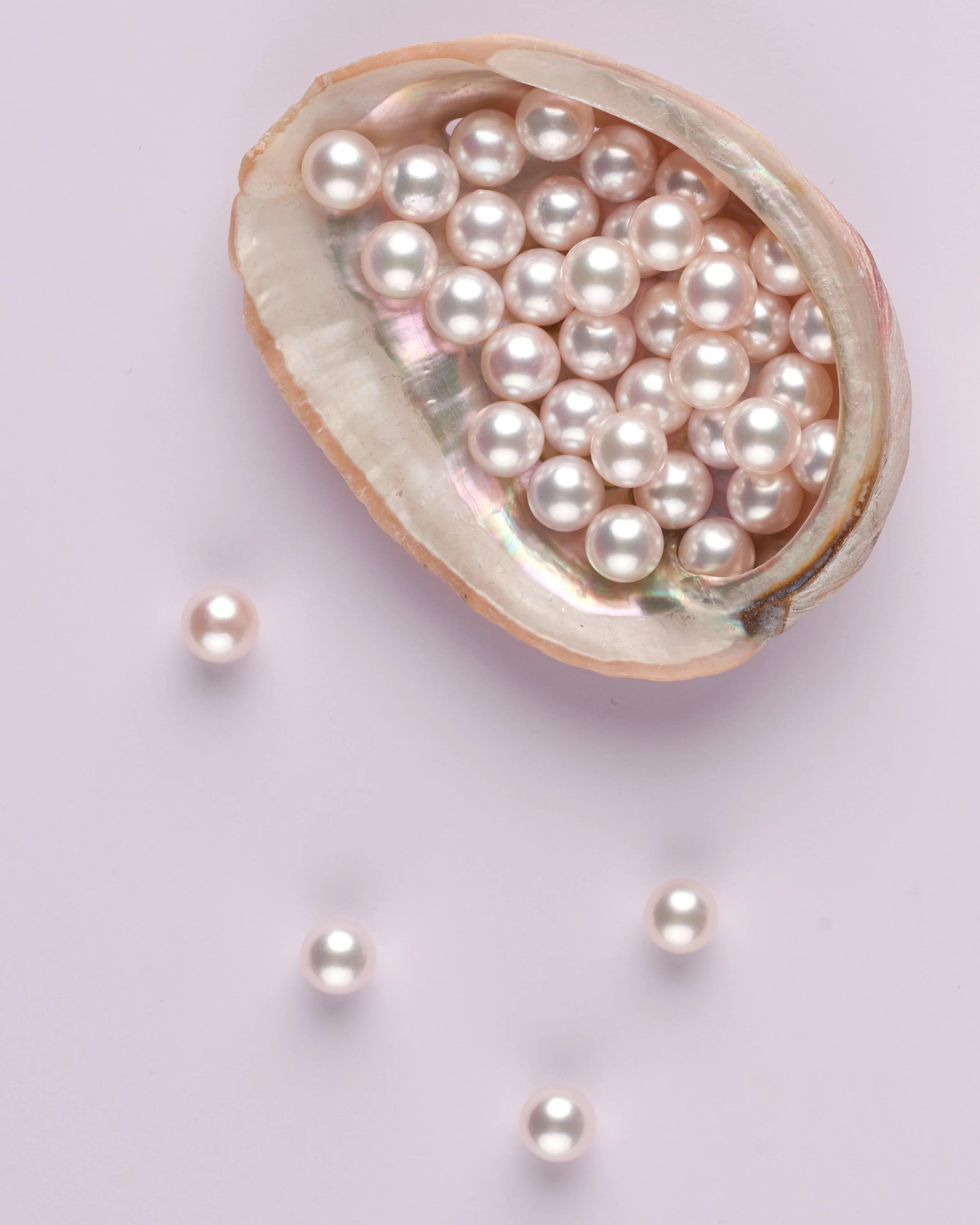
Akoya Pearls
Akoya pearls are considered the classic cultured pearl, the smaller size balanced by a renowned lustre. They are generally white or cream coloured, with overtone colours of rose, silver, or cream.
Japan's presence in the international pearl market began in 1907. A team led by Kokichi Mikimoto became the first to successfully cultivate pearls. They inserted a round bead and a small piece of tissue into a Pinctada fucata martensii oyster. The result was a small, round pearl with stunning lustre. The Chinese began culturing saltwater Akoya pearls in the 1960's, but had limited success until the late 1980's. While once considered inferior to their Japanese counterparts, China is now producing Akoya pearls of qualities that rival that of the Japanese in every quality factor. Akoya oysters rarely produce more than 2 pearls per harvest. They take 6-18 months to grow.
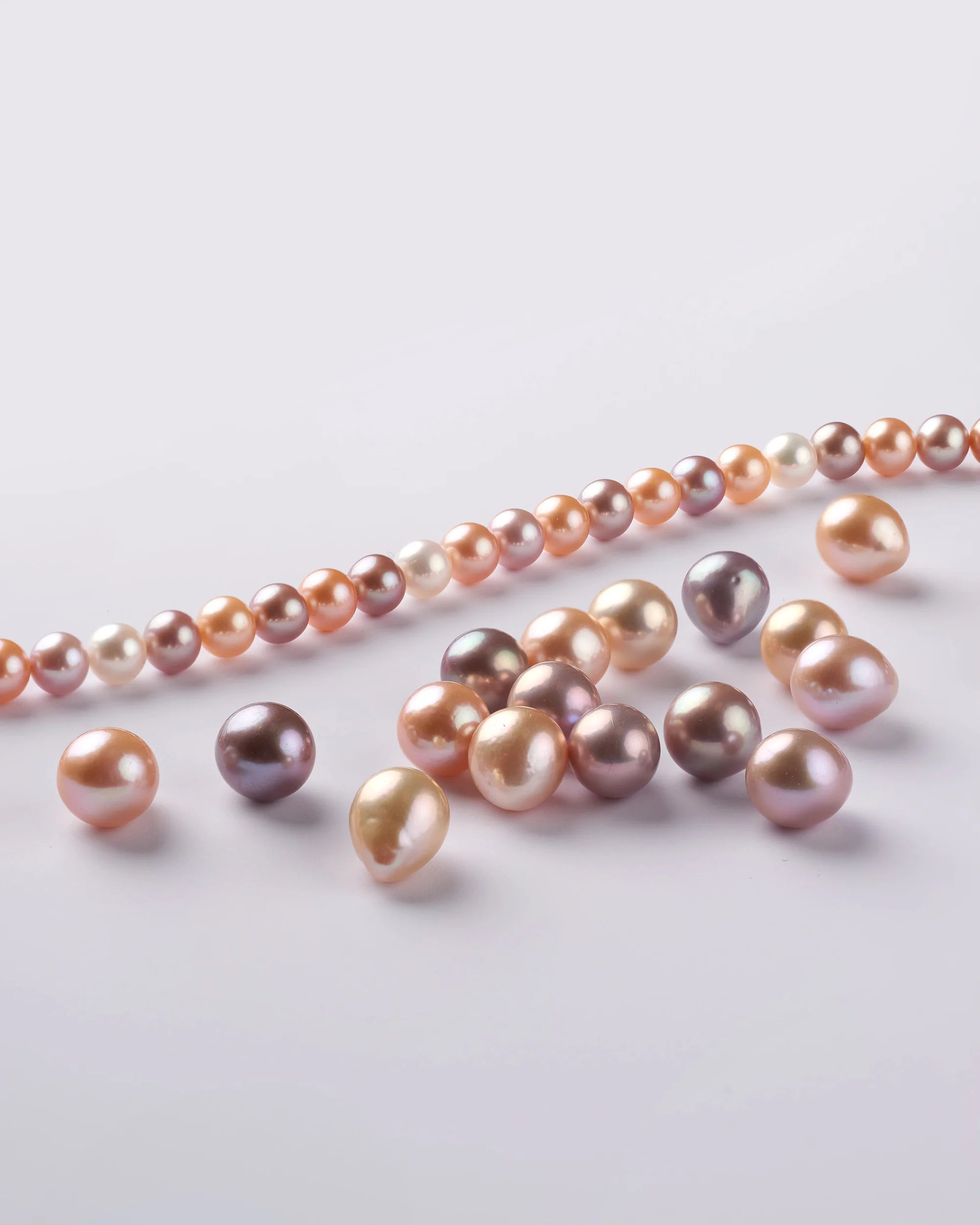
Freshwater Pearls
Freshwater pearls are the most common type of pearl. As the name suggests they are grown in freshwater rather than saltwater, usually in mussels that live in lakes and rivers. As opposed to South Sea and Akoya cultured pearls which are grown in saltwater in oysters. The process used to produce most freshwater pearls doesn't require a shell nucleus. Tissue grafting techniques are used.
Freshwater pearls are cultured by tissue nucleation. This means that the mussel is pried open enough for a technician to insert a small piece of tissue into the gonads of the mussel. This acts as an irritant and begins the production of nacre which starts the formation of the pearl.
This is why it is rare to find a round freshwater pearl. It also means that a freshwater pearl is virtually all nacre which gives a freshwater pearl outstanding lustre and makes them great value for money. Freshwater pearls also quite durable and resist chipping, wear and degeneration.
Thanks to advances in pearl farming technology, one mussel is capable of producing as many as 50 pearls at a time although current production limits each shell to 24-32 pearls. This mass production has made freshwater pearls more affordable. Culturing takes 2-7 years.
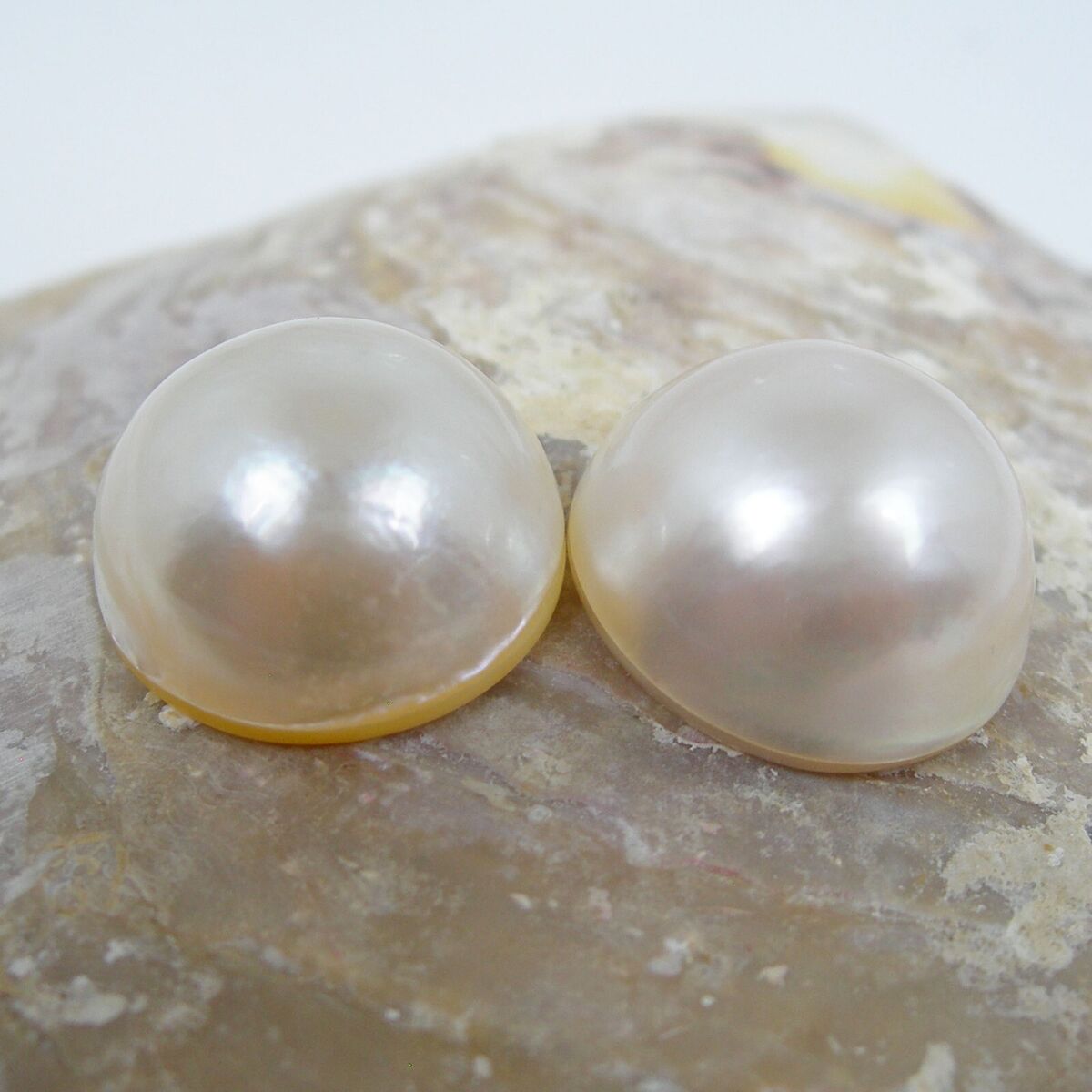
Mabe Pearls
Mabe are half round pearls, they grown on the inside of the oyster or mussel shell. The Mabe pearl is cultured by a half piece nucleus rather than a round one (often plastic or crushed up oyster), by implanting it against the inside of the oyster shell, rather than within its tissue. The mollusc secretes nacre over the bead; the Mabe pearl is then cut from the shell, and replaced with a resin. The back of the pearl is then capped with a piece of mother-of-pearl to complete the Mabe pearl. They are often used for jewellery items such as rings, earrings and pendants.
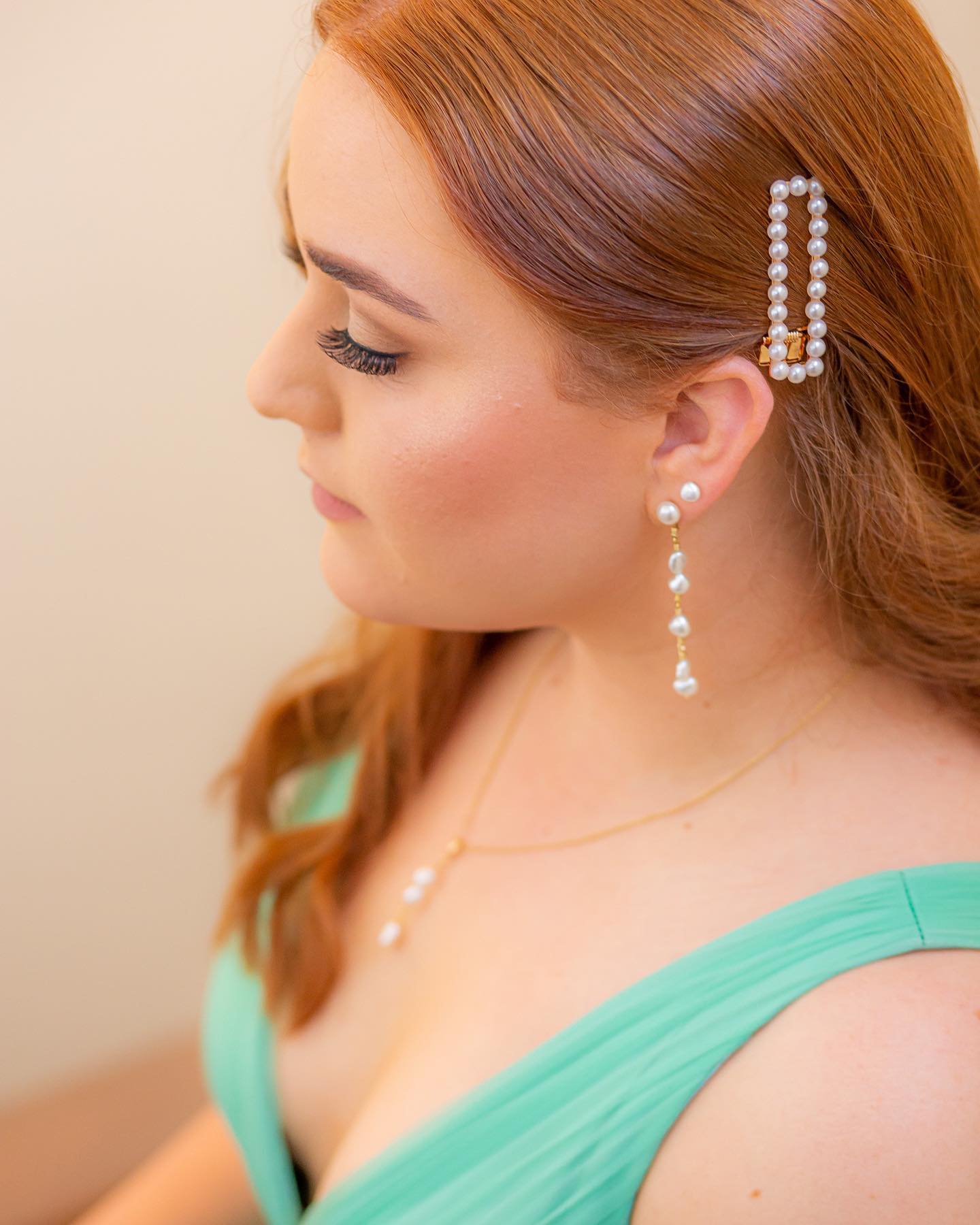
Keshi Pearls
A Keshi pearl is a non-beaded pearl formed by accident as a by-product of a pearl culturing operation. Keshi may form in either saltwater or freshwater pearls. They are generally small in size, and because there is no nucleus to guide the shaping of the pearl, their shapes vary. They are renowned for their high lustre and iridescence and unique shapes due their solid-nacre composition. Keshi pearls are made up entirely of pearly layers and range in diameter from 2-8mm. They are typically baroque in shape and are used mainly to decorate earrings, bracelets, necklaces and brooches.

